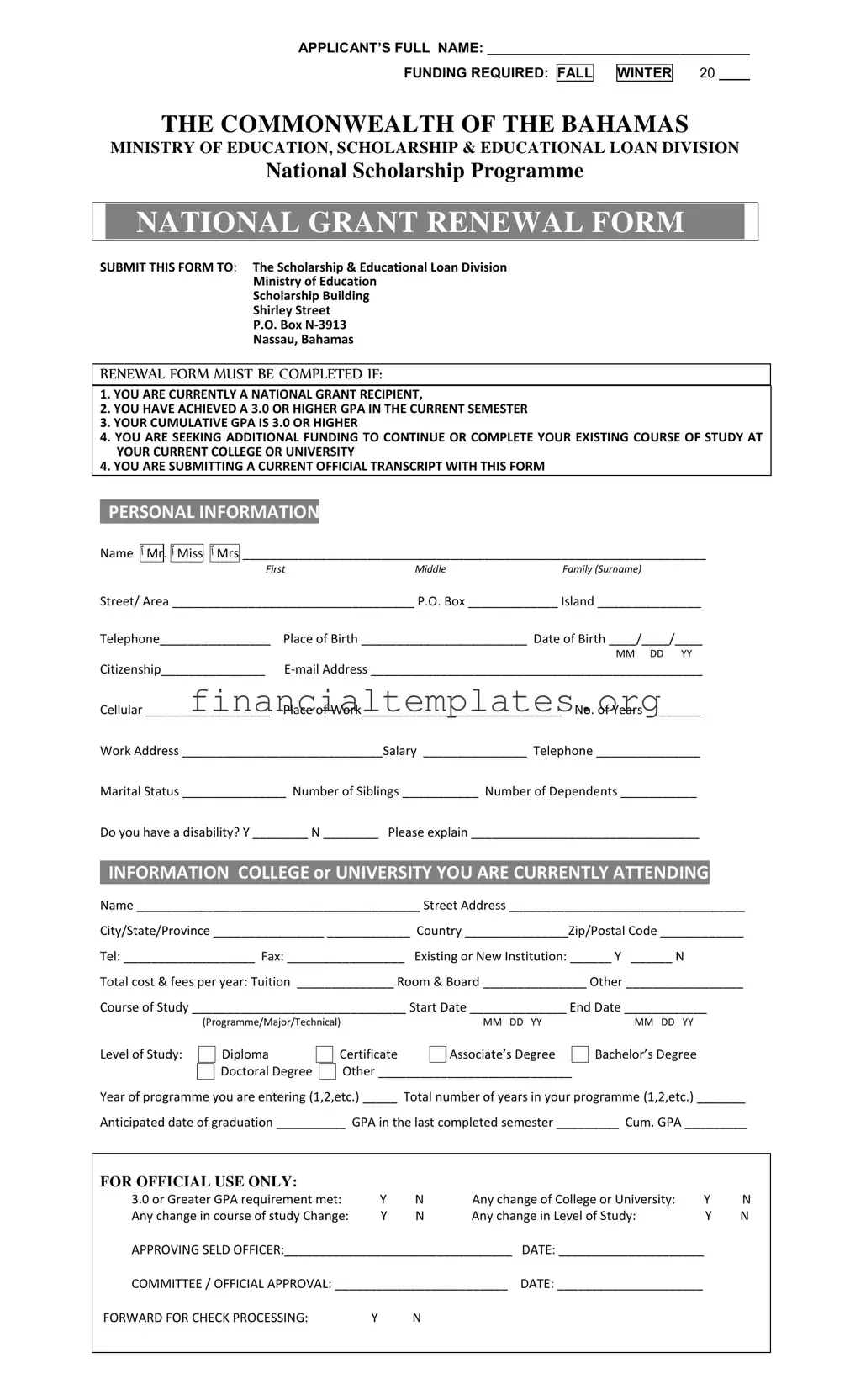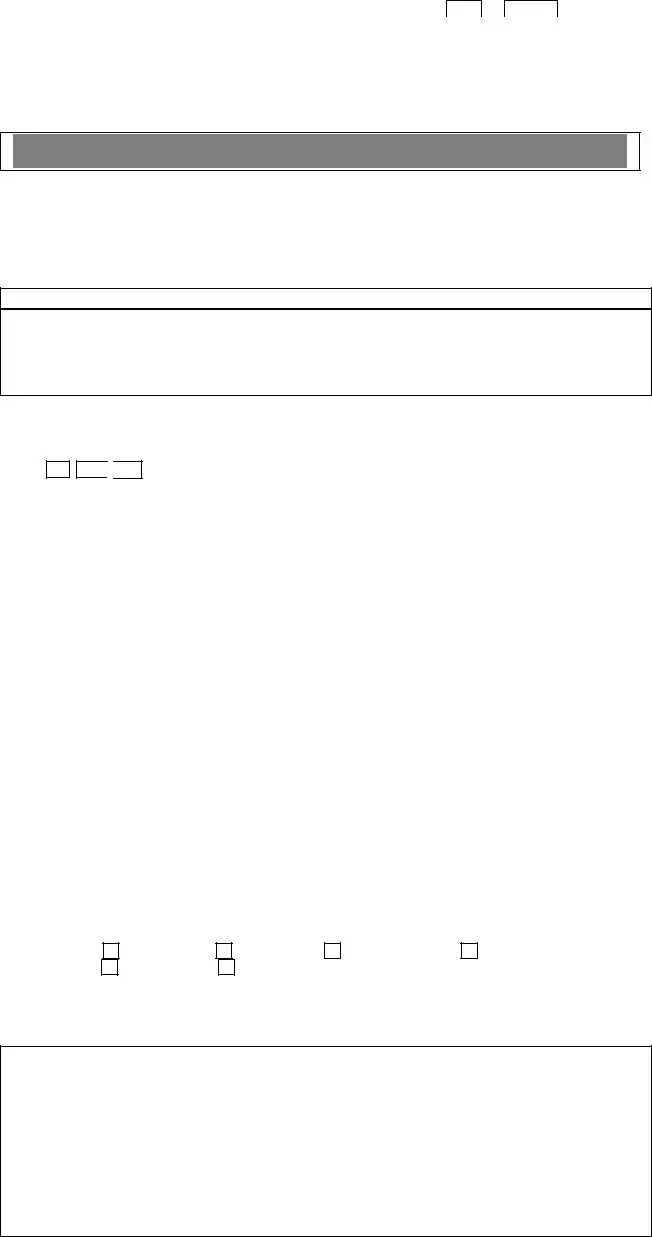The Bahamas Government Education Loan Program form closely mirrors the structure and intent of a Federal Student Aid (FAFSA) form found in the United States. Like the Bahamas' form, the FAFSA collects detailed personal and financial information from applicants seeking financial assistance for higher education. Both documents are designed to assess the eligibility of students for financial support. They require applicants to provide personal identifiers, educational history, and financial details, such as income levels and dependent information, to evaluate their need and qualification for the aid.
Another similar document is the Scholarship Application Form that numerous foundations and organizations utilize. Like the Bahamas form, these applications often ask for personal data, educational achievements, and financial information. Important parallels include the requirement for official transcripts to verify academic performance, a statement of financial need, and specific eligibility criteria, such as GPA thresholds, mirroring the 3.0 GPA requirement for renewing the Bahamian national grant.
The Common Application for college or university admission in the U.S. also shares similarities with the Bahamas Government Education Loan Program form. Both solicit extensive academic and personal information from candidates. However, the Common Application focuses primarily on facilitating admissions, whereas the Bahamas form primarily targets financial assistance, though both serve educational advancement. Each requires details about the applicant’s education history, including current and intended institutions, thus helping institutions or government bodies to make informed decisions.
Loan Application Forms from banks or other financial institutions also resemble the Bahamas Government Education Loan Program form in the type of financial and personal information gathered. Both types of applications necessitate detailed financial data from the applicant to assess their lending risk or financial need. While the former is more focused on the capacity to repay the loan, the latter aims at determining the applicant's need for educational funding, but both rely on thorough financial assessments.
A Grant Application Form for research or project funding is another similar document, often requiring detailed proposals alongside personal and educational information. These forms, like the Bahamas' educational loan form, mandate the inclusion of current academic status, GPA, and future educational plans to assess the worthiness and potential impact of the grant. Additionally, both forms require official approval or endorsements, underscoring the importance of institutional support in the selection process.
Lastly, the Employment Application Forms bear a resemblance to the Bahamas' form in their collection of personal, educational, and sometimes financial information. While the primary objective differs—gaining employment versus securing educational funding—the form's structure concerning personal data and educational background is notably similar. Applicants must detail their qualifications, experience, and sometimes their financial situation, especially in cases where the job pertains to financial responsibilities or government positions.



